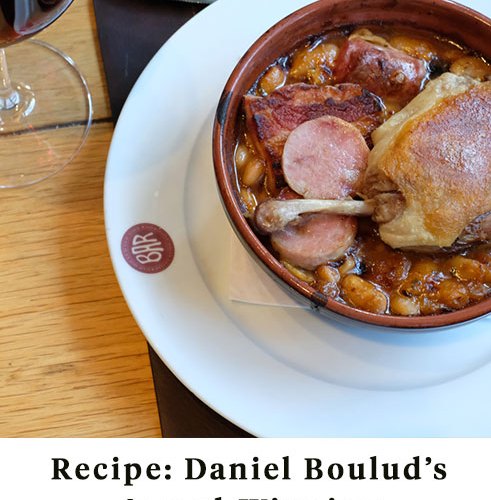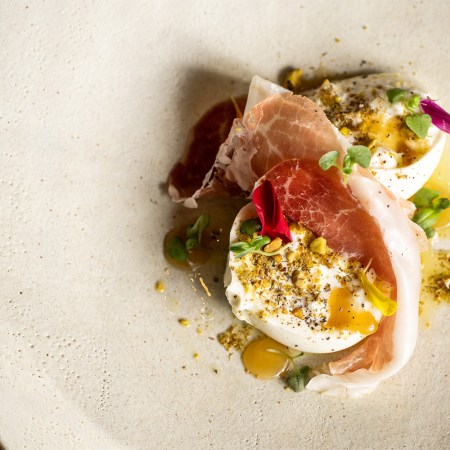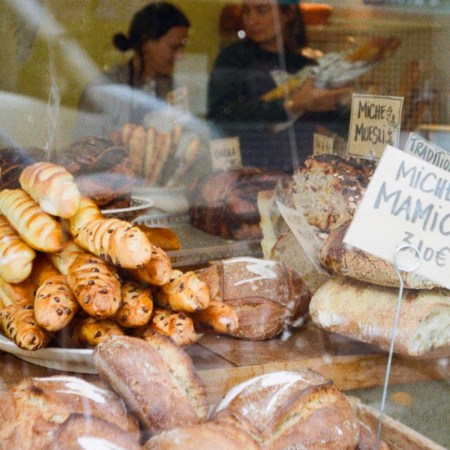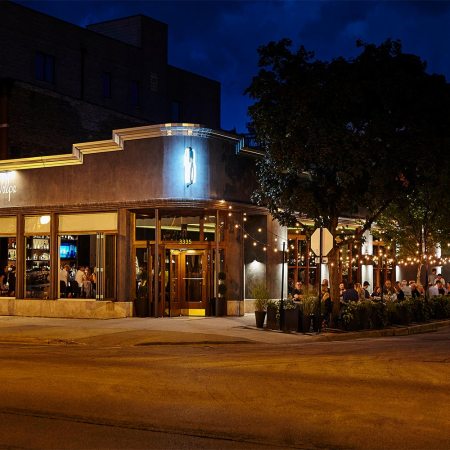In my defense, if you look up the definitions of chili and cassoulet in the dictionary, they are remarkably similar and both describe a stew that’s made with meat and beans.
But, if, as your humble correspondent did while dining on a delicious bowl of chef Daniel Boulud and chef Dieter Samijn’s award-winning cassoulet at Bar Boulud, you dare to suggest cassoulet is basically just French chili, you’ll likely get dismissed with an eye roll and a look of disdain.
Were those reactions deserved? Perhaps. But that’s not the point here. The point is, just like a slow-cooked crockpot full of chili on a snowy Sunday, cassoulet is the perfect winter companion — something Samijn found out at an early age.
“My first cassoulet experience was on a ski holiday in Chamonix,” he tells InsideHook. “It was hearty and heavy — perfect for the weather — though, not terribly good at the time.”

Building on that first experience in his native France (where the dish is actually consumed year-round), Samijn now serves up a cassoulet that, in addition to dried Tarbais beans, sausage, pig ears and duck confit, contains an atypical addition to the dish.
“We use a tomato which is a non-traditional ingredient, which lends umami to the dish,” Samijn says. “The French don’t use that all the time. But I like it because it gives umami flavor in there and it’s easier to eat. French people are used to eating really heavy and getting really strong flavor. In the U.S., you need to watch out for that I think.”
Similar to how creating the perfect blend of spices can be the key to a stellar batch of chili, getting the beans correct is the most important component of a strong cassoulet and soaking them overnight before cooking is crucial.
“A lot of people are not going to say the beans are the most important, but I believe so,” Samijn says. “You want to make sure that the inside is soft and that it’s almost buttery. The outside needs to still have a little crisp. At Bar Boulud, the first time the beans are only cooked in water and a little salt. And the second time we add a little veal stock, the liquid that we get the braising liquid collected from meats and everything.”

At the restaurant, Samijn typically goes through about 60 cassoulets a night from September until May when the dish disappears from the menu because it gets too warm outside.
For Samijn as well as his customers, cassoulet is a wintertime favorite.
“The entire process of making cassoulet gives me that feeling of being with family,” he says. “The different meats and the long hours it takes to braise the beans to fill it with flavors make it ideal to make with a group of friends and family. Its ingredients naturally warm you up and re-charge.”
Courtesy of Samijn and Bar Boulud, here’s a cassoulet recipe that serves eight. Before you try it, Samijn has a piece of advice. “Add salt to your beans when it’s cooling down to keep them whole and prevent it from breaking,” he says. “Don’t be afraid to overcook the beans during the initial cooking process — al dente beans are not done. They almost need to be overcooked the first time. Be patient.”

Duck Confit (This can be purchased in a store or made at home)
Ingredients: 4 duck legs, ½ cup kosher or sea salt, 1 teaspoon whole black peppercorns, 1 teaspoon whole coriander seed, 1 cloves garlic, crushed, 3 dried bay leaves, 1 sprig rosemary, 12 sprigs thyme, 4 cups rendered duck fat (a home cook can buy from Whole Foods or a butcher).
Directions: In a mixing bowl combine sea salt, peppercorns, coriander, garlic, bay leaf, rosemary, and 8 sprigs of thyme. Rub the salt mixture into the side of the duck with the meat and place the fat side up. Store overnight uncovered.
Preheat oven to 250°F. Rinse the cure off of the duck with cold water. Pat dry. Bring a 13×3” cast iron pan up to low heat and place the duck skin side down. Render the fat slowly, after 10 minutes bring the heat up to medium. Once the duck skin is golden brown gently flip the duck pieces over and cover completely with the rendered duck fat. Add the additional garlic and thyme. Bring to a simmer, cover and put into a 250°F oven for 1.5 hours. Be sure that the duck is tender but not totally falling off of the bone.
Remove duck from the oven and allow it to rest in the duck fat for at least 1 hour. Remove the duck from the pan, reserve 2 cups of the fat and put the rest in the refrigerator to cool.
Broth
Ingredients: 6 cups chicken stock (or water), 1 whole carrot, 1 whole onion, cut in half, 1 whole celery stalk, 1 ham hock, 1 sachet (head garlic, 2 cloves, 1 tsp black peppercorns, 1 fresh bay leaf, 8 sprigs thyme, 1 sprig rosemary).
Directions: Bring all of the ingredients to a boil and let simmer for one hour. Be sure to skim any excess fat or impurities using a ladle. After one hour strain the liquid and discard the vegetables. Return the liquid back to pot and keep hot.
Cassoulet
Ingredients: 1.5 pounds dried Tarbais beans, or cannellini (soaked overnight), 1.5 pounds pork Skin, fat removed and julienned (this can be omitted if needed), 1 pound slab bacon, cut into 1” cubes, 4 Toulouse sausages and or Lyonnaise sausage (Or pork sausage without fennel), 4 legs duck confit (can be store-bought), 4 tablespoon duck fat, 1 pound lamb shoulder, cut into 1” pieces, 2 cups onion, medium dice (about the same size as beans), 1 cup carrot, medium dice (about the same size as beans), 1 cup celery, medium dice (about the same size as beans), 1 cup tomato, medium dice, peeled and seeded, 2 tablespoon garlic sliced, 1 tablespoon tomato paste, bouquet Garnis (1 bay leaf, ½ t coriander seed, 4 sprigs flat-leaf parsley, 3 sprigs thyme, 1 sprig rosemary, 1 sprig oregano, 1 leaf sage, 2 cloves bundled together and tied with a strip of green leek).
Directions: Gently poach the pork skin and bacon for 15 minutes in the hot broth. Add sausages then continue poaching for about 5 minutes. Turn the heat off and remove all meats, placing them on a separate plate to cool. Reserve liquid and set aside.
Preheat the oven to 250°F. Meanwhile heat a 14”x11”x5”Dutch oven to medium high heat on the stove. Using a small amount of duck fat sear the cubed lamb shoulder on all sides until it is golden brown and then set aside. Add the onion and cook for about five minutes and then add the carrot and celery, sweat until vegetables are translucent, about 8 more minutes. Add the garlic, cook for another two minutes, add tomato paste and mix well and then toss in the chopped tomato.
Add beans to the vegetables and cover with about six cups of the broth or until the beans are covered. Bring to a boil and then reduce to a simmer. Cover with a lid and place in the oven. Cook for about an hour or until the beans are ¾ of the way cooked.
Remove Dutch oven from the oven and add the duck legs, sausages, bacon, pork skin and seared lamb. Add Bouquet garnis. Cover with additional liquid about ¾ of the way up and put in oven for two hours. After 2 hours adjust seasoning and turn the oven up to 350°F so that the meat can begin to caramelize. Once the beans are cooked thoroughly, and the meat is tender then season the broth as desired and serve.
This article was featured in the InsideHook newsletter. Sign up now.























